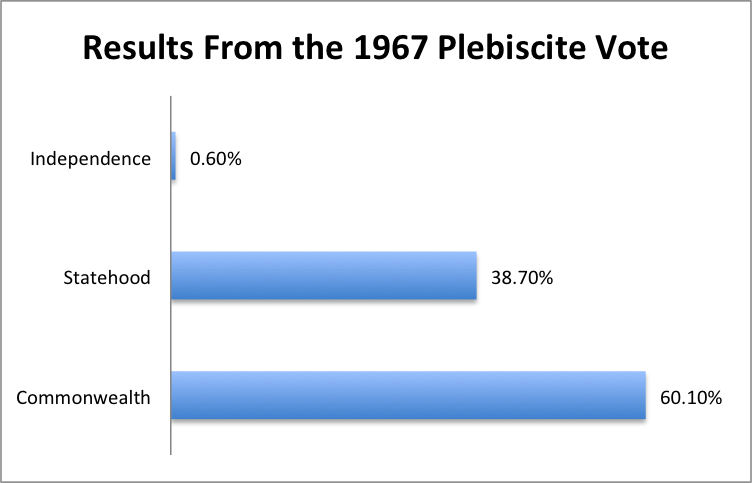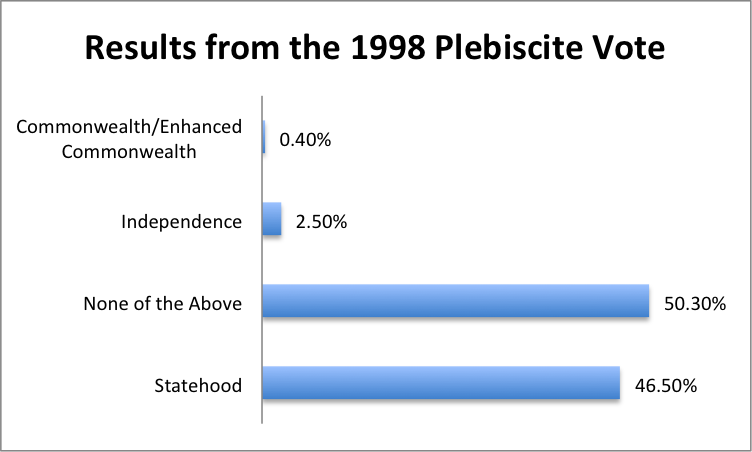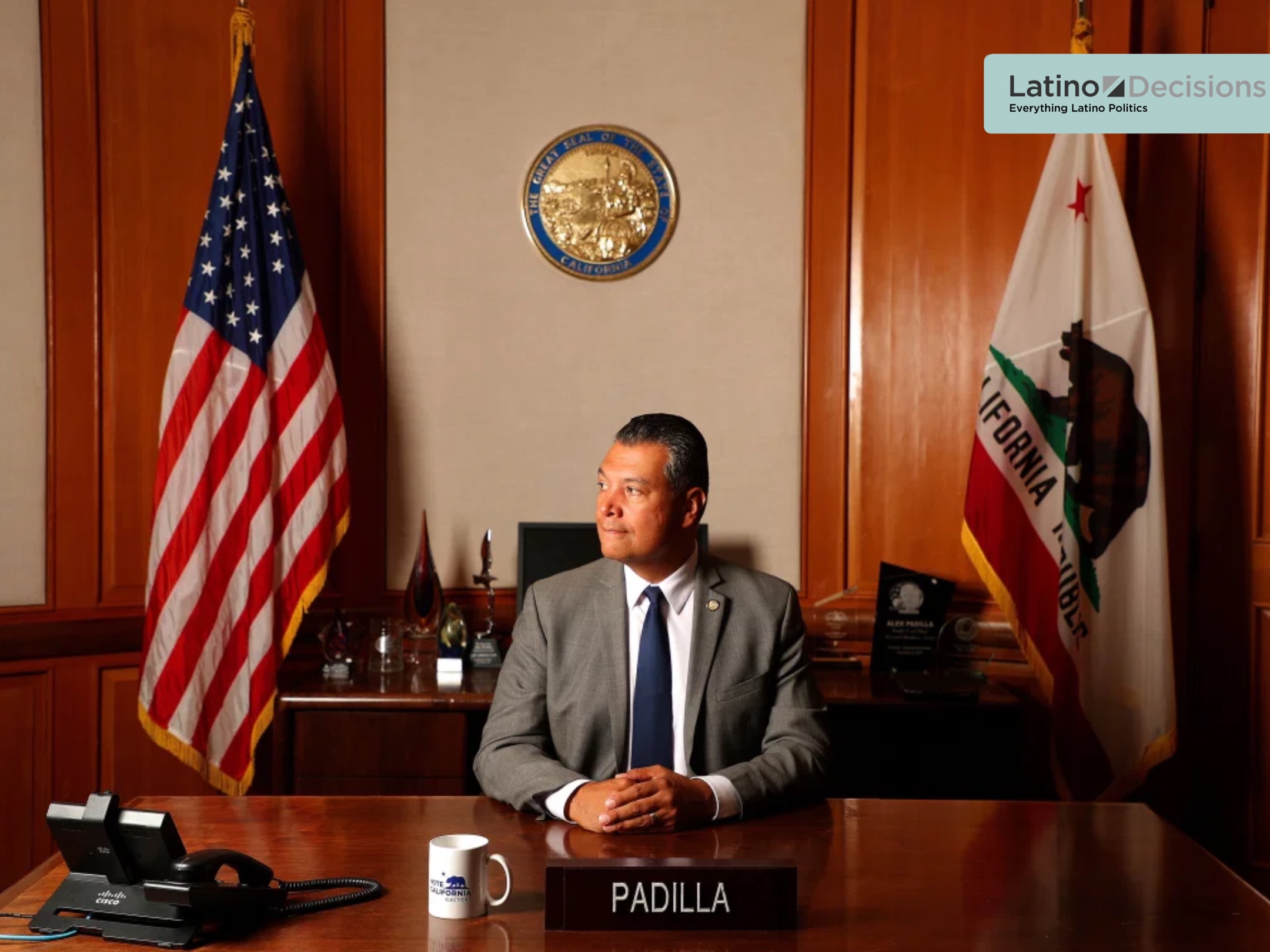On November 6, 2012, the residents of Puerto Rico went to the polls to vote on both island-wide general elections and a local plebiscite on the territorial status of Puerto Rico. This election has generated a heated debate regarding the outcome and implications of the plebiscite vote. Central to this debate are three questions, namely: In what context was this plebiscite held? What was the actual outcome of the vote? And what are the implications of this plebiscite? This entry addresses the first question by providing an overview of the political context surrounding this important vote. Additional posts providing responses to the next two questions will be posted in a short series on this topic.
Contextualizing the 2012 Plebiscite
Advocates and critics alike invoke two arguments to contextualize the 2012 plebiscite. Members of the conservative and pro-statehood Partido Nuevo Progresista (PNP) (New Progressive Party) argue that the plebiscite granted the Puerto Rican electorate a democratic opportunity to rectify more than a century of colonial subordination. These pro-statehood advocates argue that the United States has governed Puerto Rico as a “colony” since 1898 and the 2012 plebiscite is an effort to rectify a century-old injustice. This plebiscite is a mere expression of the will of United States (U.S.) citizens residing in Puerto Rico who demand equal political and economic treatment. Critics across the ideological spectrum, including members of the autonomist Partido Popular Democratico (PPD) (Popular Democratic Party), generally counter that the plebiscite was a mere political ploy to mobilize the Puerto Rican electorate to vote on a straight-ticket for the pro-statehood candidates.
To understand the current debate regarding the plebiscite vote it is helpful to review the historical arguments from both sides of the issue.
The United States annexed Puerto Rico following the 1898 Spanish-American War and invented a new territorial status to rule the island without binding Congress to grant Puerto Rico statehood or to prevailing constitutional precedents. The U.S. military occupied Puerto Rico July 1898 and soon after, following the cessation of hostilities, established a two-year military dictatorship tasked with governing the island and developing colonial institutions. Scholars agree that Brigadier George Davis, the last military governor of the island, established the key public institutions modeled after the British notion of colonial “dominion.”
Modeled after the General Davis’ proposal, in 1900 Congress enacted the Foraker Act providing a civil or territorial government for the island. The Foraker Act created a new territorial status and a corresponding government. The Third Article established that the United States could selectively govern Puerto Rico as a foreign country for trade purposes or more specifically for the collection of taxes, duties, and other tariffs on merchandize trafficked between the island and the mainland. Unlike prior organic or territorial legislation, the Foraker Act did not extend the bill of rights to the island or provide for the collective naturalization of the residents of the Puerto Rico. Within a year the Supreme Court began to affirm the Foraker Act and the ensuing territorial status in a series of rulings known as the Insular Cases of 1901. Since then the U.S. has ruled Puerto Rico as an unincorporated territory enabling the Federal government to selectively rule the island as a foreign country in a domestic or constitutional sense.
In addition, the Foraker Act established the basic government institutions for Puerto Rico, some of which endure to the present. The Foraker Act granted the President a plenary power to appoint a local government and an Executive Committee tantamount to a second branch of Congress. Puerto Rican voters were allowed to elect representatives to a lower House of Delegates or Congress. The Act also continued maintained the Federal district court created by General Davis and subsequently integrated this bench to the 1st Circuit Court of Appeals. Moreover, although the Foraker Act created the office of the Resident Commissioner, this official would not gain access to Congress until 1902. Today the Puerto Rican Resident Commissioner is elected to a four-year term to the House of Representatives, and depending on the Congress, s/he may vote in congressional committees, but is generally barred from voting in the floor of the House.
Since then, Congress amended the Foraker Act on several occasions without changing the territorial status of Puerto Rico. In 1917 Congress enacted the Jones Act extending a bill of rights to Puerto Rico, providing for the collective naturalization of the island’s residents, and creating a popularly elected Senate. In 1947, Congress enacted legislation enabling the residents of Puerto Rico to elect a local governor. More importantly, in 1952 Congress approved a tempered Puerto Rican constitution granting administrative control over local affairs to a popularly elected government described as the Estado Libre Asociado (ELA) (loosely translated as Commonwealth). The remaining provisions of the Foraker Act not amended by prior legislation were essentially integrated into the 1950 Puerto Rican Federal Relations Act, the law regulating the relationship between the island and the Federal government. To this extent, advocates of the results of the 2012 status plebiscite argue that the United States has governed Puerto Rico as an unincorporated territory since 1898 and it is time to resolve the anomalous territorial status of the island, a status that subordinates U.S. citizens residing in Puerto Rico to a separate and unequal status within the United States polity.
The Partisan Context of the Plebiscite
In Puerto Rico, critics of the pro-statehood interpretation argue that the 2012 plebiscite was a mere partisan effort to draw reluctant voters to the polls in order to enlist a straight-ticket vote for PNP candidates. More specifically, they argue that during the past four years the PNP’s authoritarian rule has been riddled with corruption and failed public policies (crime and austerity measures), and that Governor Luis G. Fortuño could only win a second term in office by combining the general elections with the plebiscite in order to promote a pro-statehood straight-ticket voting. Critics further note that the PNP’s super-majority control of the legislature facilitated the enactment of the 2012 plebiscitary law.
While it is beyond the scope of this entry to disentangle the complex history of Puerto Rican political parties, suffice it to say that following the 1898 annexation local political parties generally gravitated towards three status options, namely autonomy, statehood, and independence. Spanish and Creole elites advocating for autonomy typically argued that Puerto Rico was too small to survive without the assistance of a bigger nation and argued for a permanent self-governing territorial status. Advocates of statehood typically invoked equal membership within the U.S. polity and the benefits of statehood. It is important to note that pre-1952 pro-statehood parties (and their splinters) spanned an ideological gamut including populist and elite conservatives, liberal progressives, and even socialists who saw the benefits of alliances with mainland labor unions. Like pro-statehood parties, the pro-independence parties included 19th century separatists, nationalists, splinter parties from the statehood and autonomic parties, socialists, and other pro-independence parties.
Following the enactment of the 1952 Commonwealth Constitution, the Puerto Rican political landscape began to gravitate towards a two-party system that typically split the majority of votes in both local elections and status plebiscites. Founded in 1938, the pro-Commonwealth Partido Popular Democratico advocates for territorial autonomy. However, advocates of territorial autonomy have argued for a range of relationships with the United States including an amended continuation of the Commonwealth status under the purview of Congress as well as enhanced forms of autonomy modeled after the Micronesian Compact of Free Association and governed by treaties under the purview of the President. Alternatively, founded in 1968, the Partido Nuevo Progresista advocates for statehood.
Notwithstanding the electoral dominance of the latter parties a range of smaller parties continue to struggle for about 6% of the general electoral vote. As of the time of this writing, it is possible to identify at least four alternative political parties embracing three distinct status options. Despite its poor electoral performance, the Partido Independentista Puertorriqueño (PIP) (Puerto Rican Independence Party) continues to garner between 2-3% of the electoral vote and advocates for a transitional independence from the United States. The Movimiento Unión Soberanista (MUS) (Movement for a Sovereign Union), a splinter party from the PPD, advocates for a Sovereign Free Associated State or a variant of the enhanced Commonwealth status. Two additional parties, the Partido del Pueblo Trabajador (PPT) (Puerto Rican Workers Party) and the Partido Puertorriqueños por Puerto Rico (PPR) (Puerto Ricans for Puerto Rico Party) have adopted a neutral stance on the status question while promoting social justice agendas in the island.
As previously noted, critics argue that the 2012 plebiscite was a mere instrument to mobilize electoral support for the PNP in order to counter the effects of the party’s unpopular political agenda and failed signature public policies. The PNP won an absolute majority in the 2008 general elections and soon after began to dismantle public and civil society sources of opposition. The government put forward a plan to pack the Supreme Court with pro-statehood judges and sought to redistrict the island’s congressional districts in order to reduce the number of legislative seats, a move that would have likely resulted in the permanent creation of a majority of PNP districts in the island. The government also sought to dismantle the University of Puerto Rico and the Puerto Rican Bar Association, two traditional hotbeds of civil society. Simultaneously, the PNP’s signature public policies failed. Austerity measures resulting in the massive firing of public employees (by some accounts upwards of 30,000) and the transfer of public resources to the pro-statehood friendly private sector exacerbated the local depression and failed to improve the economy. Governor Fortuño’s order-maintenance and “broken-windows” policies failed to reduce public violence and four years after his election crime is out of control in Puerto Rico. Finally, widespread clientelism, corruption, and public scandals threatened to discourage voters from either turning out to the polls or even voting for the statehood party in the 2012 island-wide general elections. Thus, in order to mobilize voters and hoping to benefit from straight-ticket voting, critics argue, the pro-statehood government scheduled 2012 plebiscite along with the general elections. The plebiscite vote was therefore central to many of the races on the 2012 ballot.
Controversies Associated With Plebiscite Votes and Statutes
As Yazmin Garcia-Trejo and I noted in our previous post, Federal lawmakers have debated upwards of 110 statutes and plebiscitary bills between 1900 and 2012. During the same period Congress has only authorized 1 status plebiscite for Puerto Rico. The 1967 plebiscite provided U.S. citizens residing in Puerto Rico with a choice among three status options, namely the Commonwealth territorial status, statehood, and/or independence. The Commonwealth option garnered a majority (60%) of the votes. It is important to note, however, that internal divisions within the statehood and independence parties hampered the performance of both parties in the plebiscite. In both instances, large numbers of members refused to vote in the plebiscite. In the case of the pro-statehood party, the Partido Estadista Republicano (PAR) (Republican Statehood Party), a faction led by Republican Luis A. Ferré subsequently formed the PNP in 1968 and at times used the plebiscite as a rallying cry to recruit more members to the party.

(Source: Comisión Estatal de Elecciones, Estado Libre Asociado de Puerto Rico)
Since then, the Puerto Rican legislature has enacted three laws providing for local non-binding plebiscites in 1993, 1998, and 2012. In all three instances, the pro-statehood PNP held a majority control of the Governor and Resident Commissioner’s offices, both houses of the local legislature, and mayoral offices throughout the island. Like the 1967 Federal plebiscite, the 1993 law provided for three status options and the Commonwealth option prevailed with nearly 48.6% of the vote compared to 46.3% for the Statehood option (see Figure below). It is important to note, however, that Roberto Sánchez Vilella, a former pro-Commonwealth governor, and others successfully sued the governor challenging the failure of the 1993 plebiscite to provide other alternatives and definitions of the three traditional status options. In Sánchez Vilella et al. v. ELA et al. [134 D.P.R. 503, 519-520 (1993)] the Puerto Rican Supreme Court affirmed the right of voters to submit “blank” plebiscitary ballots as a form of protest. Stated differently, the Puerto Rican Supreme Court unequivocally established that blank ballots (not to be confused with a failure to vote) are a legitimate and democratic form of civil disobedience or protest in Puerto Rican electoral law.

(Source: Comisión Estatal de Elecciones, Estado Libre Asociado de Puerto Rico)
Unlike prior plebiscites, the 1998 ballot was mired in controversy from the beginning. Puerto Rico had recently suffered vast destruction at the hands of hurricane Georges and voters felt that a plebiscite represented an unreasonable waste of public funds that could be better spent in providing aid to victims of the hurricane. In addition, the pro-statehood Governor Pedro Roselló was experiencing backlash from the attempted sale of the Puerto Rican telephone company to a private Spanish corporation and from wide spread corruption scandals within his administration. Suffice to say that many (over 50% as indicated in figure below) Puerto Rican voters boycotted the 1998 plebiscite by filling out the so-called fifth option in the ballot or the “None of the Above” option. This vote effectively nullified the 1998 plebiscite.

(Source: Comisión Estatal de Elecciones, Estado Libre Asociado de Puerto Rico)
Like prior plebiscites, the 2012 law was also mired in various controversies. Also known as the Democracy Act, early versions of this plebiscite were introduced in the House of Representatives between 2005 and 2008 by then Resident Commissioner Fortuño. With the support of Representative José Serrano (D-NY), Resident Commissioner Pierluisi was able to successfully shepherd the Democracy Act of 2010 through the House, but the bill lost traction in the Senate. In 2011, the Puerto Rican legislature passed a revised version of the Democracy Act with strong objections from the pro-Commonwealth PPD leadership. The leadership of the Puerto Rican Independence Party welcomed the plebiscite with the understanding that the language of the law was designed to fragment the Commonwealth option and favor statehood. Members of the PIP believed that the U.S. Congress would unilaterally reject any demands for statehood from Puerto Rico and thus expose the Puerto Rican electorate to the political limits of the PNP. The 2012 plebiscite vote is full of controversy and in many ways reflective of the politics of Puerto Rico more broadly.
Stay tuned for additional posts on this topic, including an interpretation of the results of the 2012 plebiscite vote that will be released later this week.
Charles R. Venator-Santiago is an Assistant Professor in the Department of Political Science and the Institute for Latino/a, Caribbean and Latin American Studies at the University of Connecticut
The commentary of this article reflects the views of the author and do not necessarily reflect the views of Latino Decisions. Latino Decisions and Pacific Market Research, LLC make no representations about the accuracy of the content of the article.


